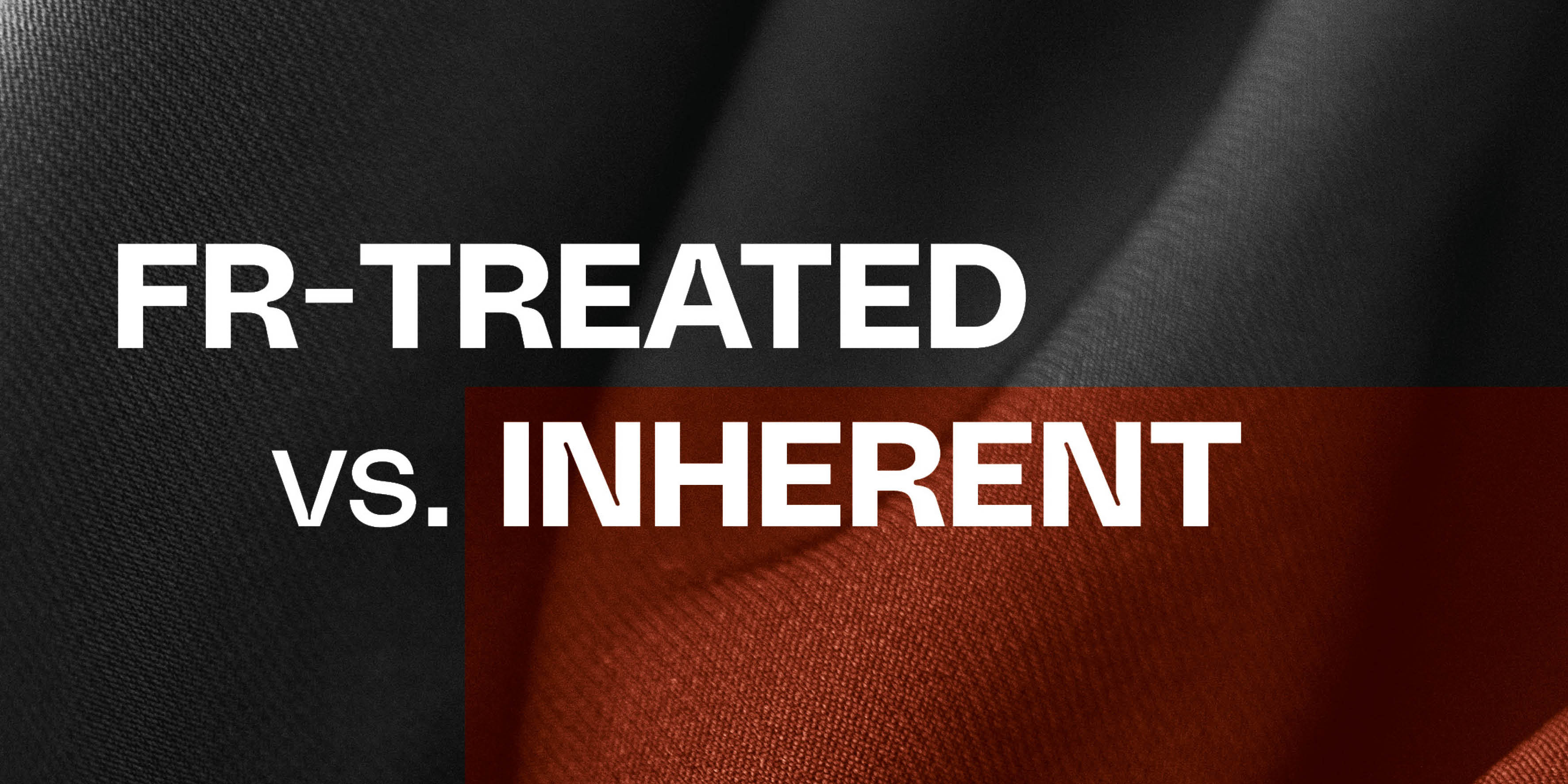A common question in the market is, “Does an FR-Treated fabric lose its flame retardant properties after washing?” The answer is simple: no! Yet this remains a common misunderstanding. Therefore, we are happy to explain the difference between inherently flame retardant and FR-Treated cloths, and how both options protect the wearer from heat, flame and fire. Both types of fabrics comply with EU standard EN ISO 11612 & EN ISO 11611, but the difference is in the way the fabric is made flame retardant. Inherently flame retardant cloths mainly contain fibers such as Modacrylic and Aramid that naturally have flame retardant properties. FR-Treated cloths are made from a cellulose-containing cloth that is made flame retardant via a chemical finish.
Our Textile Innovator speaking
To clear up any misunderstandings about the operation and durability of these cloths, we asked Textile Innovator Kees Timmermans to explain:
1. Does an FR-Treated fabric lose its flame retardant properties in the wash?
“This is perhaps the biggest misconception in the market. Many people think that an FR-Treated fabric completely loses its flame retardant protection after several washings, but our tests prove that this is not true. Together with Syensqo (formerly Solvay), the supplier of Proban chemicals, we have tested this extensively. Our 5-Safety Image (+) cloth was washed and dried not 50, but 100 and even 150 times in accordance with ISO 15797 and then retested for its flame retardant performance. The results? The LOI (Limiting Oxygen Index) value - a measure of flame retardancy - remained well above the critical limit of 26%. This means that even after 150 washes, the fabric still delivers fire retardant performance comparable to inherently flame retardant fabrics used in this segment, such as Modacrylic and Aramid. The decrease in LOI value after 150 washes was only 1.4%, which is negligible. This decrease is because in the wash you wash a minuscule amount of cotton fibers out of the clothing and that is a normal process.”
2. What are the benefits of inherent cloth?
“Inherent flame retardant cloths have the advantage that the flame retardant properties are in the fibers themselves. This means that the protection cannot wear away or diminish with washing or abrasion. Fibers such as Aramid (Nomex) and Modacryl blends retain their flame retardant properties throughout the life of the cloth.”
Article | LOI Index [%O2] |
| % oxygen in air | 21 |
| Cotton / Lyocell | 18-19 |
| Polyester | 20-22 |
| Polyamide | 20-24 |
| Wool | 25-26 |
| Modacrylic | 26-30 |
| Meta-aramid (Kevlar, Nomex, Kermel) | 28-32 |
| PBI (Polybenzimidazole) | 40-41 |
| PBO (Polybenzoxazole) (Zylon) | 68 |
| Melamine (Basofil) | 30-40 |
| Polyimide (PI, P84) | 38-41 |
| Preox fibers (oxidized polyacrylonitrile (OPAN)) | >50 |
| Carbon fibers | >60 |
| Cotton-polyester Proban | 28.5 |
| Cotton-polyester Proban 50 washes and drying cycles | 28.0 |
| Cotton-polyester Proban 100 washes and drying cycles | 27.3 |
| Cotton-polyester Proban 150 washes and drying cycles | 27.1 |
3. What are the advantages of an FR-Treated fabric?
“The biggest advantage of an FR-Treated cloth is that it is often more cost-effective than an inherently flame-retardant cloth, without sacrificing protection. Through our extensive testing, we know that a Proban-finished cloth still has excellent flame retardant performance after 150 washes. In addition, we must realize that in practice, workwear is often replaced well before 50 washes are reached. Most garments have done their job by then and are in need of replacement due to wear and tear or damage from the work itself. This means that in many cases an FR-Treated cloth is an excellent choice in terms of protection, durability and cost facet. At VP Textile, we work mostly with a Proban-finished fabric that includes cotton. The properties of cotton change minimally by adding the finish, so the clothing wears comfortably.” In addition, Proban offers good quality assurance as each production batch is independently tested in new condition but also after 50 industrial washing and drying passes.

Together we will find the solution that really suits you!
The idea that FR-Treated fabrics lose their flame retardant properties significantly in the wash is a myth. Independent tests show that protection is maintained even after 150 washes. Both inherently and FR-Treated cloths offer excellent protection and meet stringent standards such as EN ISO 11612. The choice depends on the application, environment and budget. Want to know more about the right choice for your work environment? Feel free to contact us, we are happy to help!
Read below about our staff's views on PFAS!
If companies do not work with chemicials or have no risk of a flash over then an FR-treated package offers the right protection. An inherent package I recommend when companies do work with chemicals or have fire hazards in the operations. Chemical energy and utility companies benefit from this. We see the FR-treated package doing its job well in the metal industry. So we have the right solution on the shelf or customized for all markets. So are you looking for optimal protection for your people in combination with a beautiful design and durable materials? Then get in touch with HAVEP!
- Alex Bastiaansen, CCO Benelux
